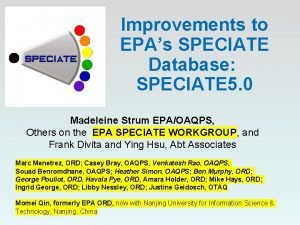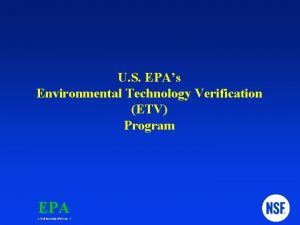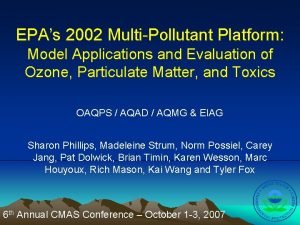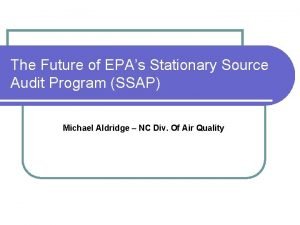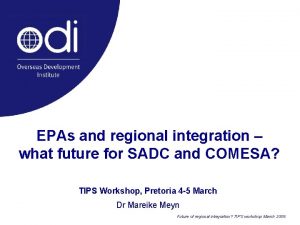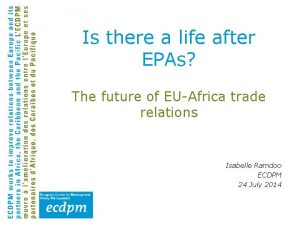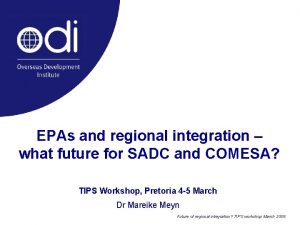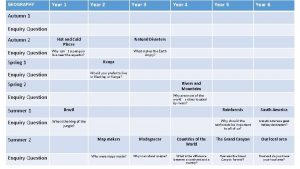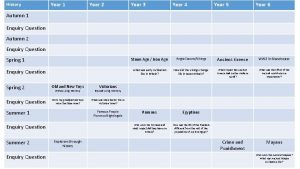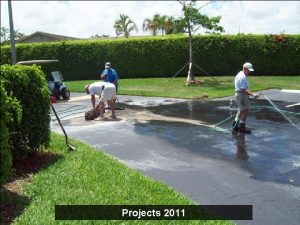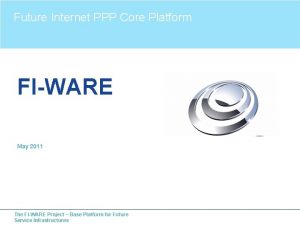EPAs 2011 v 6 2 Platform Future Year



















- Slides: 19

EPA's 2011 v 6. 2 Platform Future Year Emissions Inventory Projections October 6, 2015 Alison Eyth, Rich Mason (EPA OAQPS EIAG*) Alexis Zubrow (Volpe, DOT) * Emission Inventory and Analysis Group

Base Year NEI is the Basis for Projections � NEI data submitted by states, locals, tribes (S/L/T) and EPA into the Emissions Inventory System (EIS) � Five categories ◦ ◦ ◦ Point/Facility Inventory (point locations) Nonpoint (county-based) – includes biogenics Onroad mobile sources from MOVES model (except CA) Nonroad mobile sources from NONROAD / NMIM Events (day-specific fires from SMARTFIRE) � EPA and S/L/T data are blended to create the NEI ◦ http: //www. epa. gov/ttn/chief/net/2011 inventory. html � EIS outputs a “flat file” in a format input to SMOKE � 2011 NEI Version 2 was released in March, 2015 ◦ Included many improvements over 2011 NEI Version 1 OAQPS, Emission Inventory and Analysis Group 2

Emissions Modeling Process Ancillary Data: profiles and cross references SMOKE 5 e fil ro P l s PM 2. 5 (tons) 4 a or T Inventories (annual, monthly, daily, hourly) 2 1 0 1 22 43 64 85 106 127 148 169 190 211 232 253 274 295 316 337 358 p em 3 SMOKE software performs temporal allocation, spatial allocation, and speciation to create… Speciation Profiles Met. Data l ia at Sp es at og rr Su Gridded, hourly, speciated emissions in a format for an air quality model 3

Emissions Models Used for 2011 v 6. 2 Base Year and Projections � Biogenic Emission Inventory System (BEIS): creates air quality model-ready biogenic emissions (new: v 3. 61 is embedded in SMOKE) � Motor Vehicle Emission Simulator (MOVES): generates emission factors for onroad mobile sources that can be combined with activity data within SMOKE (new: MOVES 2014) � National Mobile Inventory Model (NMIM): generates inventories for nonroad mobile sources (being replaced by MOVES) � Integrated Planning Model (IPM) new v 5. 14: generates EGU emissions for future years OAQPS, Emission Inventory and Analysis Group 4

Future Year Projections � Estimate ◦ ◦ changes between base and future years Changes in activity levels (e. g. , VMT, # wood stoves) Rules / technology changes in intervening years New units, closures, consent decrees Interpolation / extrapolation often difficult or technically not defensible � Projection ◦ ◦ techniques vary by sector Use models for future emissions (EGUs-IPM, onroad-MOVES) Apply factors - both for activity changes and controls Stand-alone inventories: new kilns, ethanol, biodiesel plants Hold constant: biogenics, fires (only anthro. change) � Each platform uses consistent methods for a set of future years (2017 and 2025 for 2011 v 6. 2) OAQPS, Emission Inventory and Analysis Group 5

Future Year Ancillary Data � Most ancillary data is the same in base and future year modeling � Meteorology is held constant � Spatial surrogates are constant � Temporal profiles are constant for most sectors (except for EGUs) � Speciation profiles are constant for many sources ◦ Updated for mobile sources to account for changes in fuels in future years OAQPS, Emission Inventory and Analysis Group 6

EGU Projections based on IPM � IPM is a multi-regional, dynamic, deterministic linear programming model of the U. S. electric power sector ◦ Provides forecasts of least-cost capacity expansion, electricity dispatch, and emission control strategies that meet constraints � IPM 5. 14 reflects impacts of federal and state laws and regulations through 12/2014 in the intervening years � Produces winter, summer, and annual emissions ◦ Pollutants: CAPs, Hg, HCl, CO 2 ◦ Output years: 2016, 2018, 2020, 2025, 2030, 2040, 2050 ◦ Years not directly produced by IPM mapped to others � EGUs for which emissions are predicted by IPM are identified in the NEI point inventory and substituted with IPM output data in future years ◦ IPM postprocessor creates a flat file that can be read by SMOKE OAQPS, Emission Inventory and Analysis Group 7

Map of IPM regions OAQPS, Emission Inventory and Analysis Group 8

EGU Temporal Allocation for Future Years � Allocate IPM winter and summer emissions to unit-specific 2011 hourly temporal pattern of the CEMS data for that season, when possible � Otherwise, sources are temporalized using regional average profiles to allocate emissions to month, then day, then hour ◦ Used for units that are new, have no 2011 emissions, change fuels from base to future, or have large predicted emission increases ◦ Profiles are region-, fuel-, and pollutant-specific OAQPS, Emission Inventory and Analysis Group 9

Example of Unit-specific EGU Temporal Profiles Summer emissions at this unit going down in future Note: Average profiles do not include gaps in service OAQPS, Emission Inventory and Analysis Group 10

Emissions Capped at Historic Annual Max Levels OAQPS, Emission Inventory and Analysis Group 11

Regional Average Profiles � � � Use for unmatched units, new units, fuel switches, 0 base year Profiles now vary by fuel (coal, gas, composite) and region Diurnal profiles now vary by winter, summer, and composite ◦ Previous platforms only used composite OAQPS, Emission Inventory and Analysis Group 12

Onroad Projections Overview � Reflect ◦ ◦ ◦ some changes in MOVES input databases: Regulatory impacts (also incorporated into MOVES code) Inspection and Maintenance programs Vehicle age distributions Fuel changes Speciation changes due to fuel changes � SMOKE: Future year VMT and other activity data � Constant between base year and future year: ◦ Counties for which emission factors are computed (i. e. , “representative counties”) ◦ Meteorology ◦ Temporal profiles and spatial surrogates �Updated for 2011 v 6. 2 (see Technical Support Document) 13

Vehicle Miles Traveled Projections � Use Annual Energy Outlook (AEO) 2014 to get overall magnitude (varies slightly due to vehicle / fuel mix) � 2011 v 6. 2 adjusts light duty (LD) VMT projections geographically based on human population projections AEO projection County adjustments 14

Projecting Vehicle Age Distribution 2018 Recession Years before modeled year 2025 Years before modeled year • Each plot shows fraction of vehicles • Shift in recession to older section of age distribution to maintain model year impacts • Dampening of spikes/troughs occurs over time due to scrappage 15

Non-EGU Point and Nonpoint � Control Strategy Tool within Emissions Modeling Framework is used to project most NEI non-EGU point and nonpoint inventories ◦ Exceptions include stand-alone future year inventories (e. g. , biodiesel and cellulosic plants, new cement kilns) � Input data “packets” created from many data sources ◦ Packet Types: Closures, projections, control percentage ◦ Data from: AEO, EPA offices (e. g. , rules), state / local / regional organizations, consent decrees, NEI submissions ◦ Very complex to integrate data from all sources together � 2011 v 6. 2 updates ◦ Growth for non-EGU industrial sources ◦ Updates to oil and gas, residential wood combustion, commercial marine vessels, boilers, fugitive dust OAQPS, Emission Inventory and Analysis Group 16

Impact of Projections 2011 and 2025 Projected Emissions 18 000 16 000 14 000 Annual tons 12 000 10 000 8 000 6 000 4 000 2 000 0 2011 NH 3 2025 NH 3 2011 NOX Point 2025 NOX NOx 2011 PM 10 Nonpoint 2025 PM 10 2011 PM 2. 5 Onroad 2025 PM 2. 5 Nonroad 2011 SO 2 2025 SO 2 2011 VOC 2025 VOC Fires OAQPS, Emission Inventory and Analysis Group 17

Challenges for projections � Placement of new sources � Quantifying impacts of rules ◦ Incorporating state rules � Meteorological changes � Keeping up with data changes (e. g. , AEO 2015) � International emissions and projections ◦ Only have 2010 for Canada ◦ EPA developed 2008 -based projections for Mexico � Projecting fires and their impact on biogenics � Projections of changes in land use/population ◦ Spatial surrogates could be updated for future years OAQPS, Emission Inventory and Analysis Group 18

2011 v 6. 2 Emissions Modeling Platform Data Availability � Data and documentation is available from http: //www. epa. gov/ttn/chief/emch/index. html#2011 ◦ ◦ ◦ TSD (Final Ozone NAAQS, Proposed ozone transport) 2011 NEIv 2 -based inventories, scripts, ancillary data Speciation profiles for CB 05, CB 6, SAPRC 07 Spatial surrogates for 4 km, 12 km, 36 km Temporal profiles 2015 EIC training class on modeling / projections � IPM o o 5. 14 base case data available at new URL: http: //www. epa. gov/airmarkets/powersectormodeling. html Other EPA web page locations will be changing 10/1 � Ongoing o NODA for 2011/2017: comments due 10/23 EPA-HQ-OAR-2015 -0500 - Contact eyth. alison@epa. gov OAQPS, Emission Inventory and Analysis Group 19
 Epas
Epas Epas database
Epas database Epas enablers
Epas enablers Epas technologies
Epas technologies Herojinis
Herojinis Future perfect or future continuous exercises
Future perfect or future continuous exercises Future simple continuous perfect
Future simple continuous perfect Poem about leaving primary school
Poem about leaving primary school What year did darcydi nucci coined it as fragmented future?
What year did darcydi nucci coined it as fragmented future? Present continuous for future plans
Present continuous for future plans Future continuous and future perfect
Future continuous and future perfect Future plans and finished future actions
Future plans and finished future actions Future nurse programme
Future nurse programme Future perfect tense
Future perfect tense Future perfect presentation
Future perfect presentation English page future continuous
English page future continuous Kondicional engleski
Kondicional engleski Present past future tense
Present past future tense Tense chart
Tense chart Vldb industrial track
Vldb industrial track

